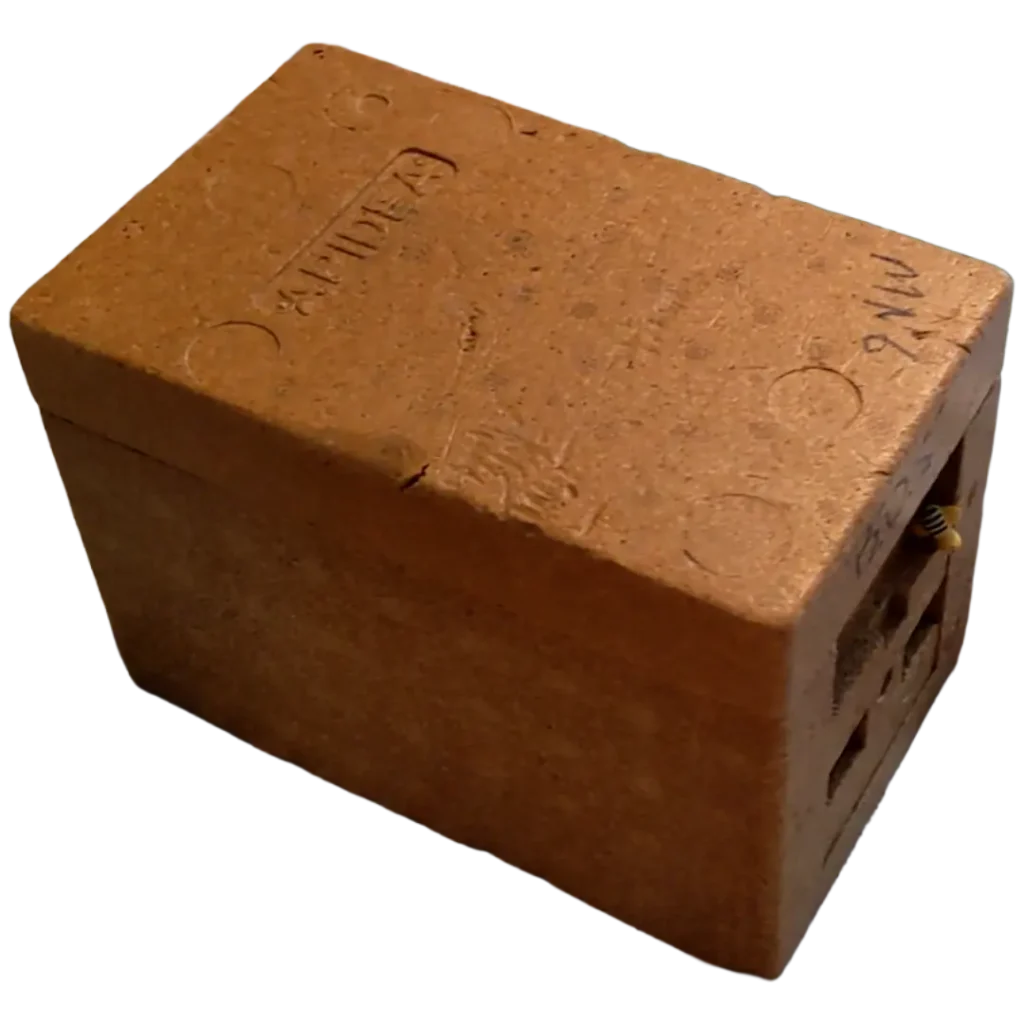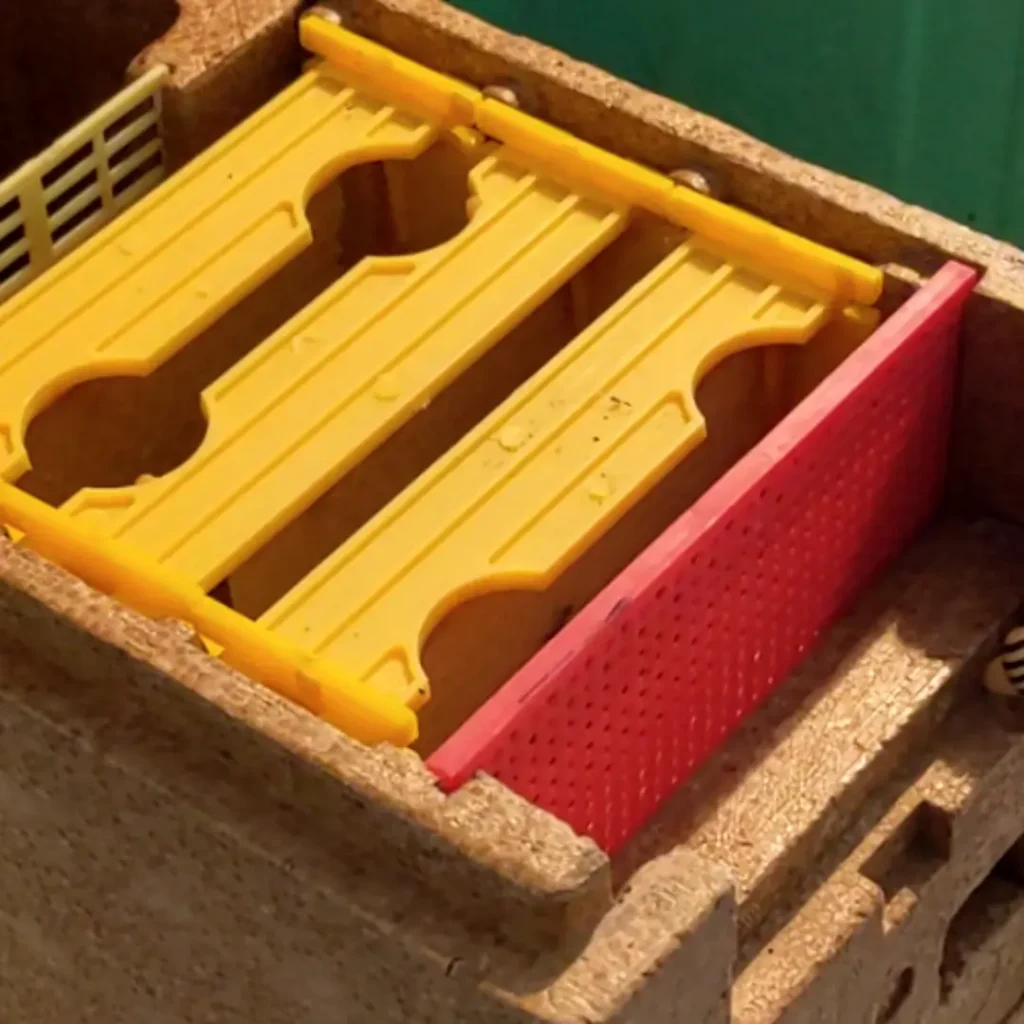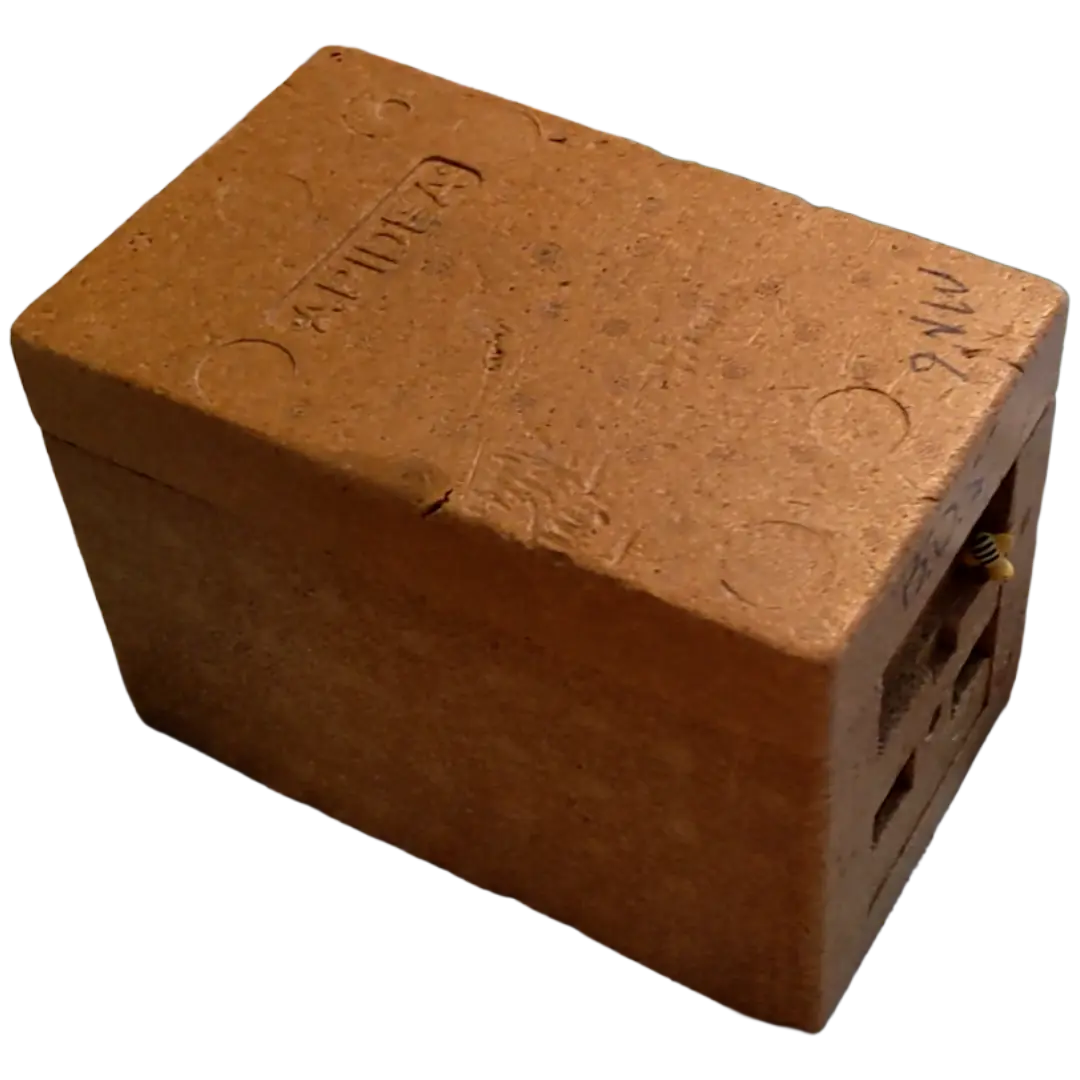Apidea mating hives are small nucleus colonies designed for raising and mating queen bees. Made from expanded polystyrene foam, they are lightweight and well-insulated, housing compact moulded plastic frames for ease of use.

Lightweight and Portable
One of the key benefits of these hives is their portability. Because they are extremely light, they can easily be moved or positioned in orchards or apiaries. However, their low weight also means they are prone to blowing over in windy conditions. To secure them, beekeepers often strap the hives to sturdy tree branches using cut sections of car inner tubes. Strong, thick branches with minimal movement are best for this purpose.
Features of Apidea Hives
- Moulded plastic frames: Each frame includes small recesses in the top bar designed to accept queen cells, making them practical for controlled queen rearing.
- Integrated feeder: A feeder compartment is positioned at the rear of the frames, allowing easy provision of syrup or fondant without disturbing the colony.

Practical Considerations
While popular among many beekeepers, some find Apidea hives too small for their preferred style of queen rearing. Larger mating colonies often provide more stability and flexibility than these compact boxes. Experiences from beekeepers suggest that slightly larger setups can lead to improved results in some cases.
Adaptor Boards and Multi-Storey Use
Albert Knight of BIBBA developed an adaptor board that allows multiple Apidea units to be joined together. By stacking two or more boxes, beekeepers can create a two- or even three-storey configuration, giving colonies more space and making the system more versatile.
This adaptability ensures that even though Apidea hives are small, they can be scaled up when required, bridging the gap between miniature mating nucs and larger mating colonies.
